Types of Handwriting: Print, Cursive, Italic & More
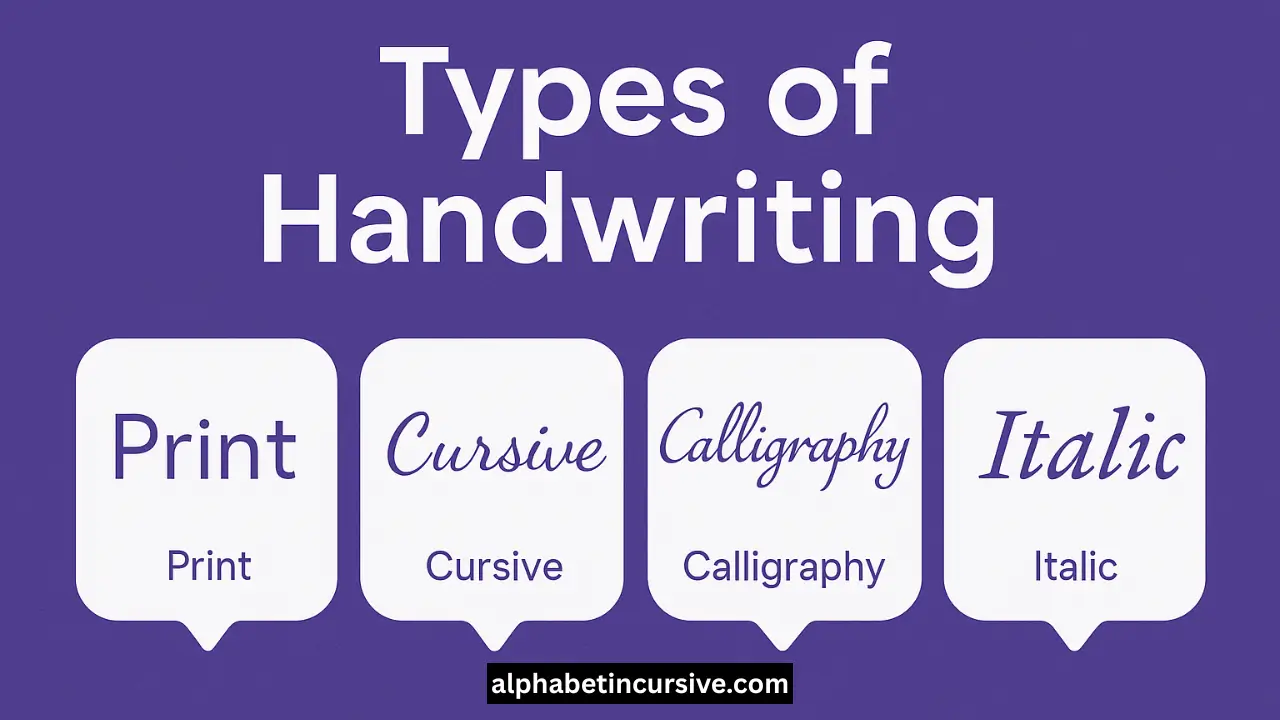
Handwriting is the way letters and words are formed by hand using a pen or pencil. It comes in many styles, each with its own shape, slant, and rhythm. Some handwriting is simple and easy to read, while others are more flowing or decorative.
The type of handwriting you use can affect how quickly you write, how neat your writing looks, and how easily others can read it. In schools, students often begin with block letters, then move on to cursive. Some adults stick with print, while others prefer connected strokes or more artistic styles.
Why Handwriting Still Matters Today
In a world where our fingers fly across keyboards, you might wonder if handwriting is still worth bothering with. The answer is a resounding yes! Beyond signing your name on a document, handwriting keeps your brain sharp and your fine motor skills tuned.
It’s like a workout for your mind and hands. Plus, there’s a warmth and personal touch to a handwritten note that a typed message just can’t match. It shows you took the time, put in the effort. And for many, the simple act of writing by hand can be a calming, almost meditative experience.
Seven Main Types of Handwriting
1- Print Handwriting
Print handwriting is the most basic and widely used style. Each letter is written separately, without joining strokes. The shapes are clear and upright, making it one of the easiest styles to read and learn.
What It Looks Like
Print letters look almost exactly like the ones you see in books or on screens. Each character stands alone. There are no loops, slants, or connections between letters. This makes print easy for beginners to copy.
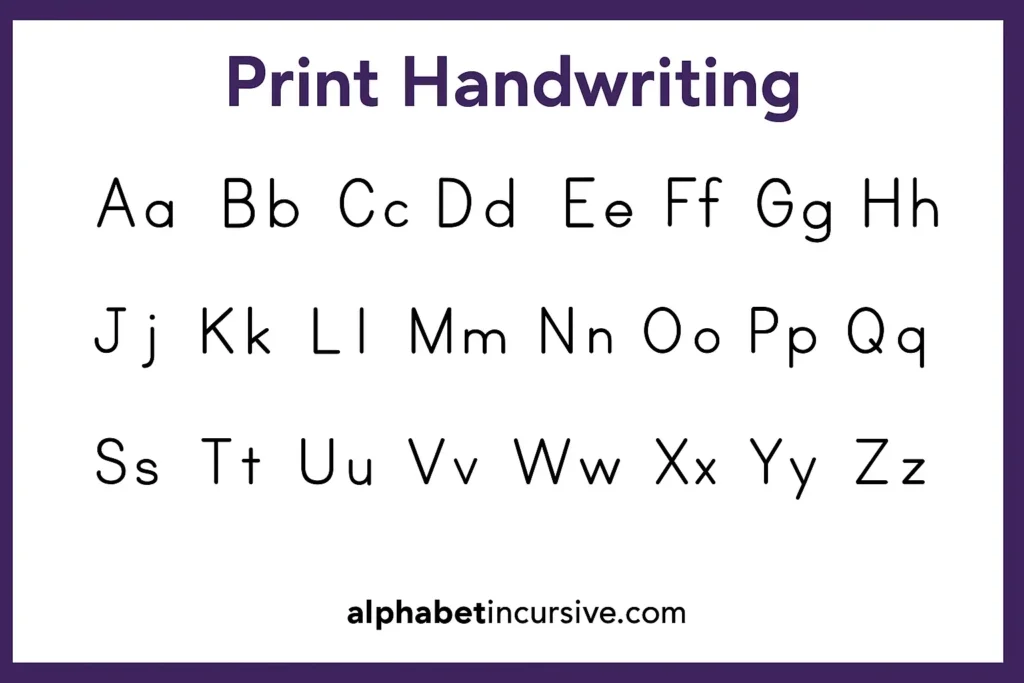
Where It’s Used
Print handwriting is usually taught first in early education. It’s used for:
- Writing names, numbers, and basic words
- Filling out forms or applications
- Making signs, labels, or notes
- Writing when neatness is more important than speed
Many adults continue using print because it feels comfortable and looks clean. However, since it requires lifting the pencil between letters, it can be slower than other styles like cursive.
Must Try Our Cursive Worksheet Generator
2- Cursive Handwriting
Cursive handwriting is a flowing style where most letters connect. It’s designed for speed and rhythm, with fewer pencil lifts between letters. Many people use cursive for personal writing, notes, and signatures.
What It Looks Like
Cursive letters are slanted and rounded. Lowercase letters usually connect to the next one in a single stroke. Uppercase letters may or may not connect, depending on the style. Loops, tails, and curves are common features.
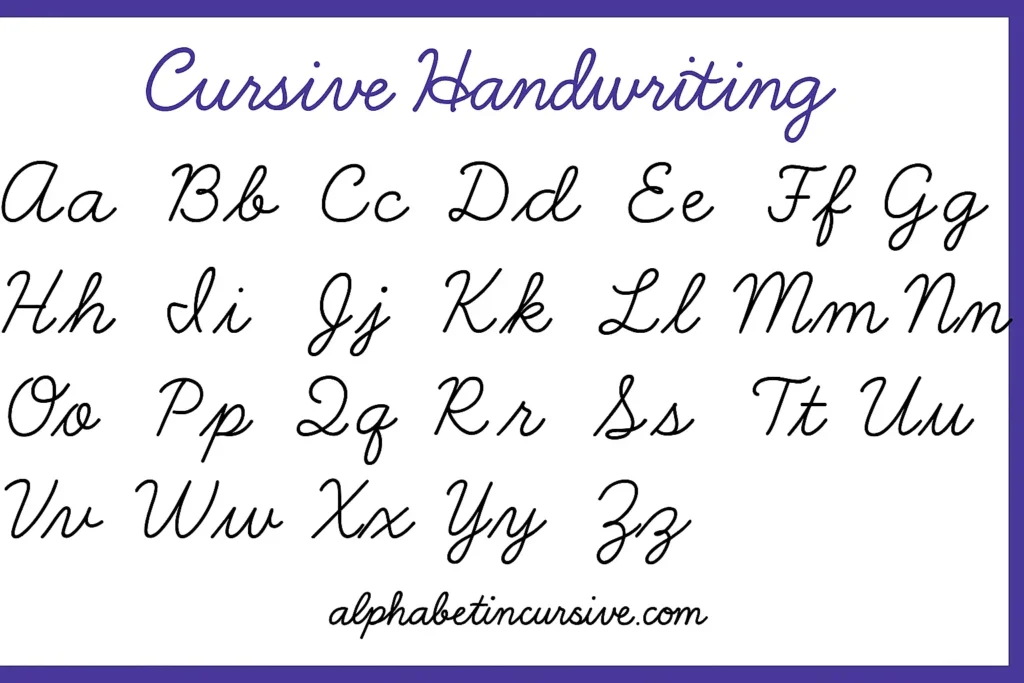
Benefits and Common Uses
Cursive is often taught after students learn to print. It helps improve writing speed and builds stronger hand control. You’ll often see cursive alphabets used for:
- Signing names
- Writing quick notes or letters
- Journaling or personal writing
- Classroom assignments (in schools that still teach it)
While cursive takes time to master, once learned, it becomes a smooth and efficient way to write.
3- D’Nealian Style
The D’Nealian style is a handwriting method designed to make the shift from print to cursive easier. It teaches children how to write with slight slants and tails so that moving into cursive becomes a natural step instead of a big change.
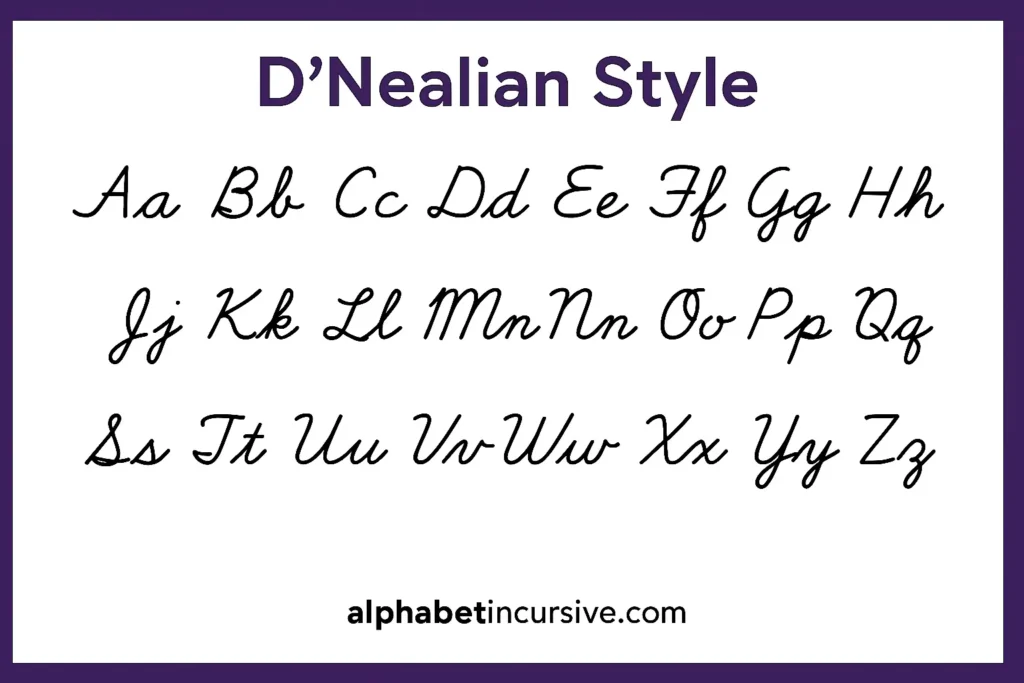
D’Nealian letters look like regular print but with small entry and exit strokes added to each letter. Most lowercase letters have a gentle right slant. These built-in strokes make it easier to join letters later when students start cursive writing.
Purpose
D’Nealian is often used in:
- Elementary schools that teach cursive early
- Classrooms focused on smooth writing transitions
- Handwriting programs where print and cursive are closely linked
It helps students avoid the sudden jump from block letters to fully connected writing. Instead, they learn with a gradual, step-by-step approach.
4- Spencerian and Palmer Method
Spencerian and Palmer are two classic handwriting styles used in the 1800s and early 1900s. Known for their graceful curves and loops, both were once taught in schools and used in business writing.
Historical Styles
Spencerian script was developed in the mid-1800s. It features elegant, flowing letters with lots of loops and light strokes. It was often used for formal documents, ledgers, and personal letters.
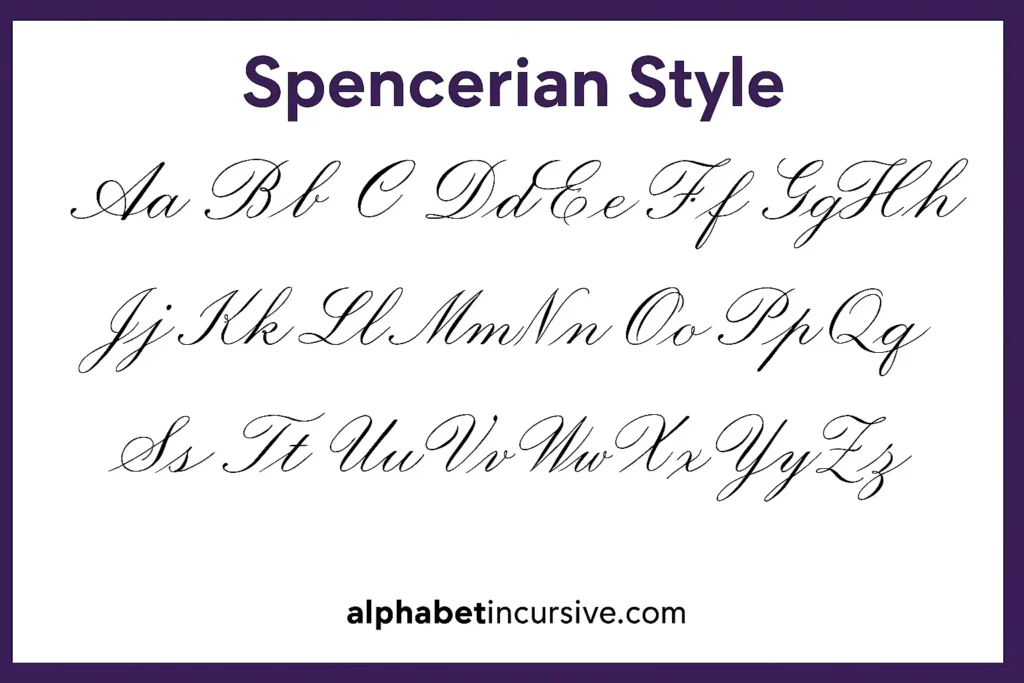
Palmer Method came later, around the early 1900s. It simplified Spencerian’s curves to create a more practical style for everyday writing. It became popular in American schools because it focused on speed, rhythm, and legibility.
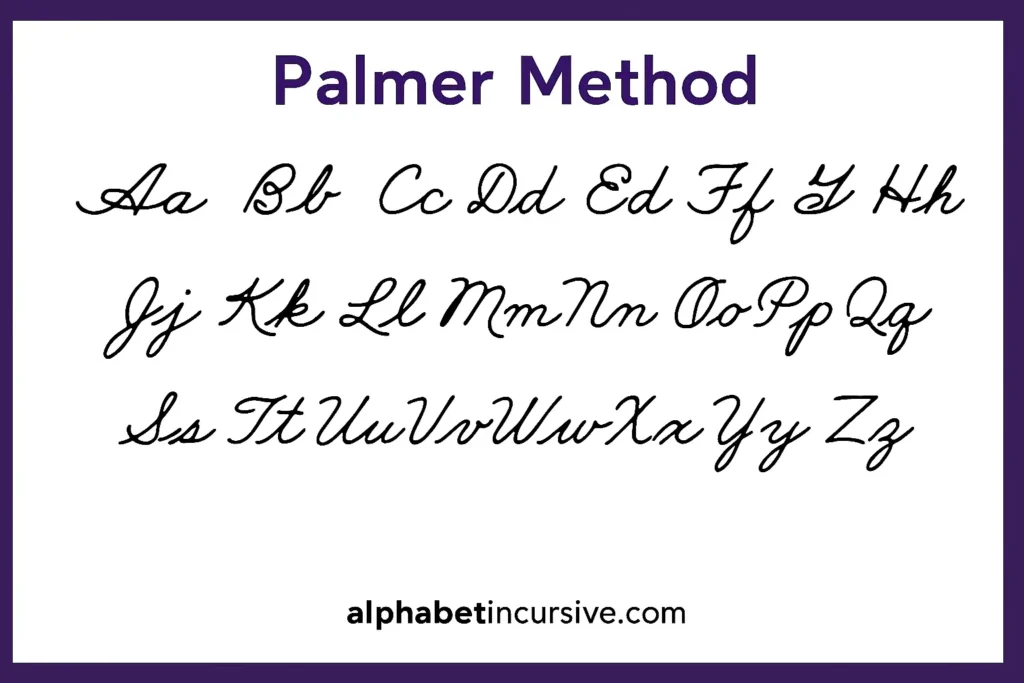
Uses of Spencerian and Palmer Method
Today, both styles are mostly used in:
- Calligraphy and penmanship art
- Vintage-style writing projects
- Signature practice
- Decorative logos and lettering
While they’re not common in daily writing anymore, both Spencerian and Palmer remain admired for their beauty and influence on handwriting history.
5- Manuscript Handwriting
Manuscript handwriting is a style that uses clear, separate strokes for each letter, similar to print but more structured. It’s commonly taught to young children as the first step toward proper letter formation.
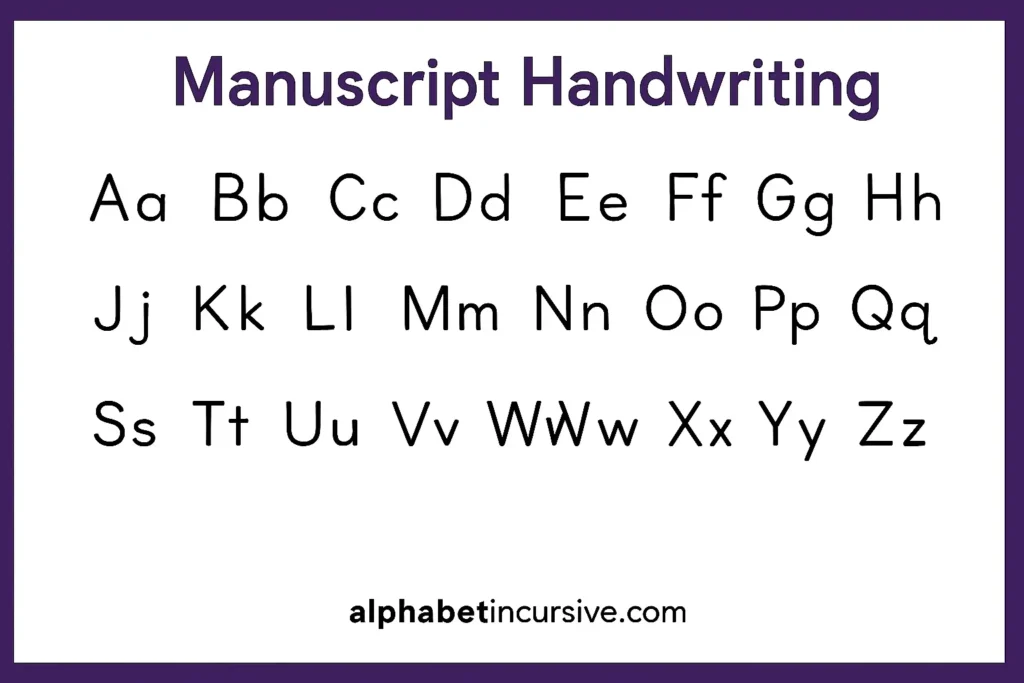
How It Differs from Print Writing
While print and manuscript may look similar, manuscript follows stricter rules for stroke direction, spacing, and letter shape. The letters are upright, with no slant or connecting strokes. Teachers often use lined paper to help students place each part of the letter correctly.
Where It’s Used
Manuscript handwriting is mostly used in:
- Early elementary school classrooms
- Basic handwriting practice books
- Writing systems that prepare students for cursive
- Any setting where clarity and structure matter
It’s slow by design, helping students focus on learning the correct shape and proportion of each letter before moving on to faster styles like cursive or italic.
Calligraphy Handwriting
Calligraphy is a decorative style of writing used for art, invitations, logos, and headings. It focuses more on beauty than speed. Letters are often written with a dip pen, brush pen, or marker, using thick and thin strokes.
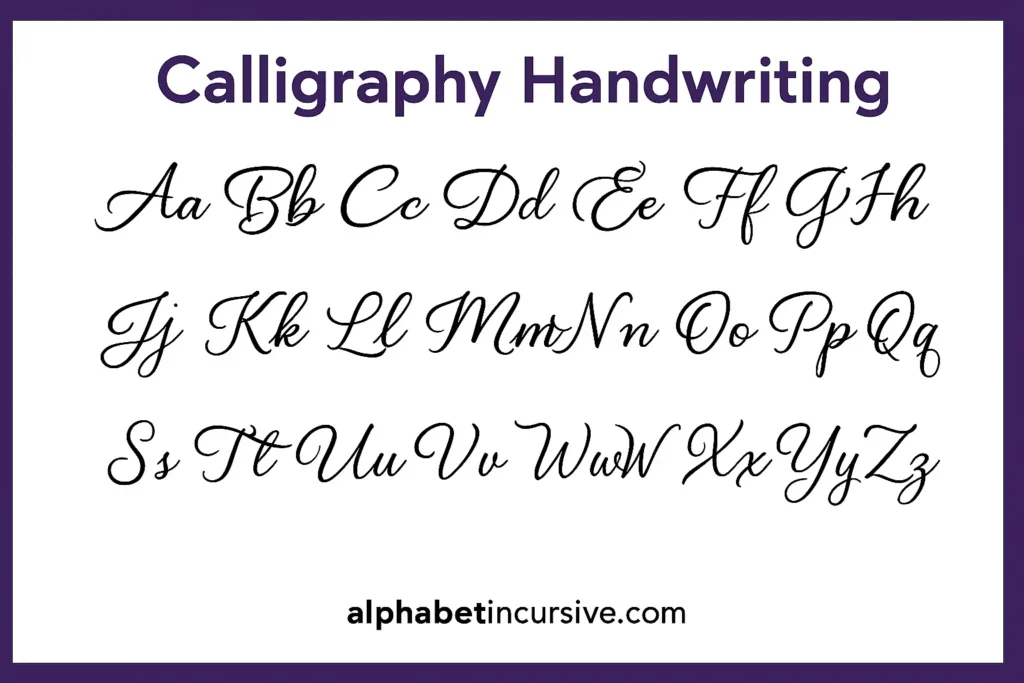
What Makes It Different
Unlike everyday handwriting, calligraphy uses pressure to change line thickness. Strokes are slow and controlled. Each letter is shaped with intention to look balanced and artistic.
Where It’s Used
- Greeting cards and wedding invitations
- Art journals and posters
- Logo design and branding
- Religious or historic scripts
6- Italic Handwriting
Italic handwriting is a clean and slightly slanted style that combines the clarity of print with the flow of cursive. It’s often used in design, formal writing, or by people who want their handwriting to look neat but still personal.
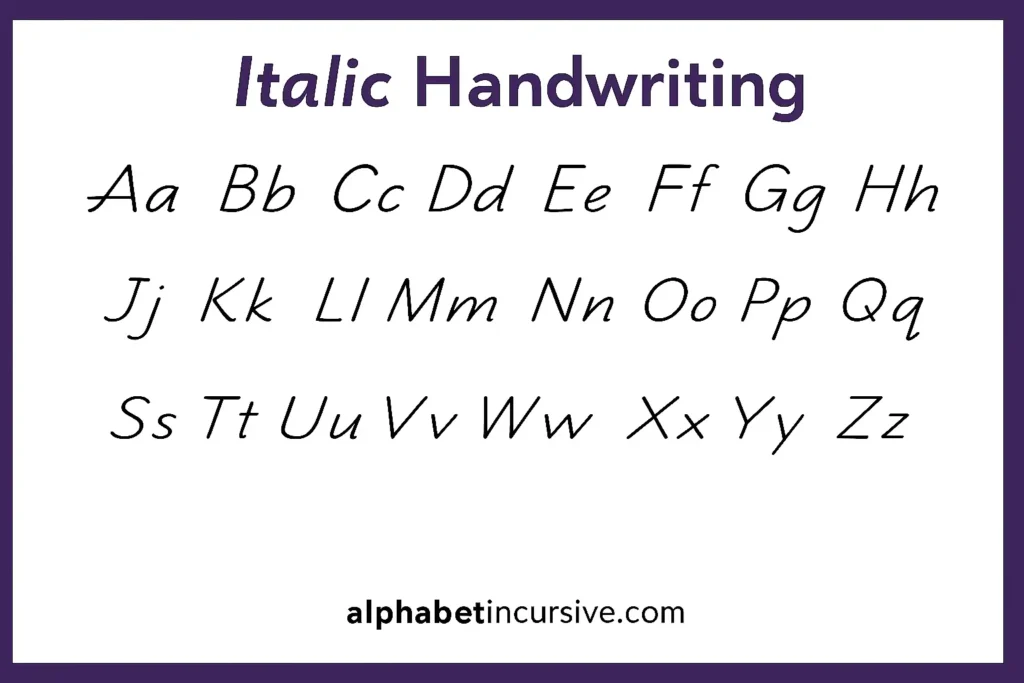
Features
Italic letters are upright or have a gentle slant to the right. The strokes are simple and straight, with minimal loops or extra curves. In some versions, lowercase letters connect, but many writers keep them separate.
Where It’s Common
Italic handwriting is used in:
- Calligraphy and art journals
- Teaching handwriting with structure
- Headings, titles, and labels
- Notes or writing where a neat style is preferred
This style is popular because it looks stylish but stays easy to read. It works well for both everyday use and special writing projects.
Which Handwriting Style Should You Use?
The best handwriting style depends on your needs, comfort, and purpose. Some people prefer print for its clarity, while others choose cursive for speed. There’s no single “right” choice, what matters is finding a style that fits you.
If you’re a student or teacher, manuscript or D’Nealian may be required. They help build strong writing habits from the start. If you write often and want to speed things up, cursive is a good option.
For clean, stylish letters, italic gives you structure with a polished look. And if you enjoy handwriting as a form of art, the Spencerian or Palmer method offers a more decorative experience.

Try a few styles. Write the same word in different forms and see which feels best in your hand and looks best on the page.
Benefits of Handwriting
Handwriting isn’t just about putting words on paper, it also supports learning, memory, and focus. Whether you’re writing in print or cursive, the process has real mental and physical advantages.
- Improves memory: Writing by hand helps you remember facts better than typing. It strengthens brain connections while you learn.
- Builds fine motor skills: Holding a pen and forming letters improves hand control and finger coordination, especially in young learners.
- Increases focus: Handwriting forces you to slow down and pay attention to each word, which boosts concentration.
- Boosts creativity: Many writers and artists find ideas flow more easily when writing on paper.
- Supports reading skills: Learning to form letters helps students recognize them in books.
- Strengthens self-expression: Everyone’s handwriting is unique. It gives your writing a personal touch that typing doesn’t.
Conclusion
There are many types of handwriting from simple print to flowing cursive and classic calligraphy styles like Spencerian. Each one has its own look, purpose, and feel.
Practicing by hand builds skills that go beyond writing. It supports memory, focus, and clear communication. Start with the basics, explore different forms, and take time to practice. Good handwriting isn’t about perfection! It’s about control, rhythm, and confidence on the page.
Frequently Asked Questions
What are the main types of handwriting?
The main handwriting styles are print, cursive, italic, manuscript, D’Nealian, and classic methods like Spencerian and Palmer.
Can you change your handwriting style?
Yes, you can change your handwriting. It takes regular practice around 10 to 15 minutes a day. Use lined paper and follow proper strokes for the style you want. Over time, your letters shape and spacing will adjust to match the new style
Does handwriting reflect personality?
Some believe scribbles, slant, and spacing show personality traits. This idea is called graphology, but it is not supported by strong science. So, handwriting may express individuality, but it doesn’t reliably reveal character.
Is cursive faster than print?
Yes, cursive can be faster because letters connect in a continuous flow, reducing pencil lifts. However, legibility improves with practice, so beginners should focus on form before speed.
Why write by hand in the digital age?
Handwriting supports learning and memory. Writing by hand helps you remember things better than typing, improves fine motor skills, boosts focus, and encourages personal expression .
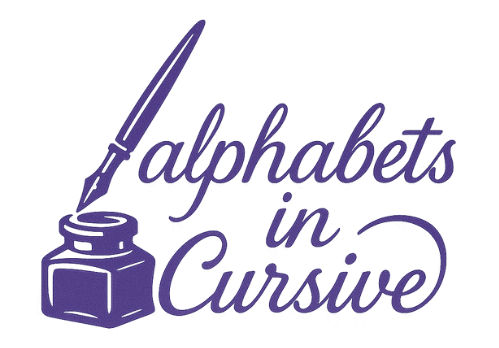
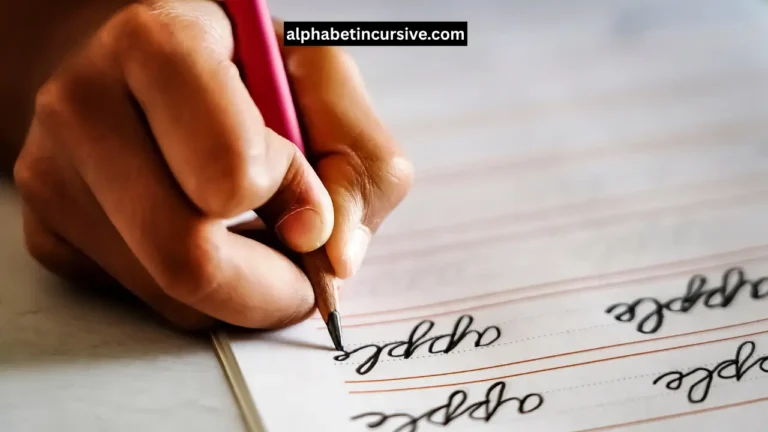
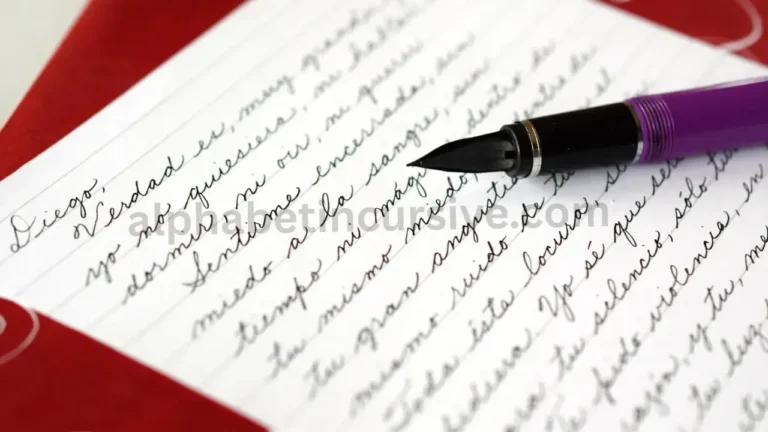
I enjoyed reading this
Cursive writing always feels so graceful and personal. It adds a unique charm that typing can never replace.